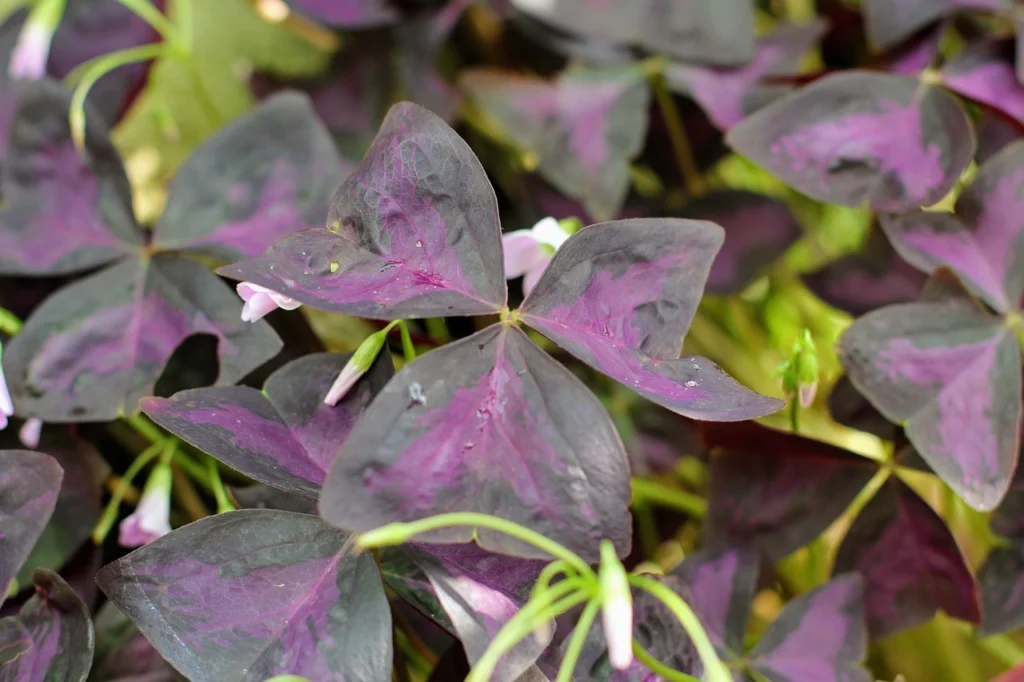OXALIS (HAPPINESS PLANT) – THE REASON THIS PRENADER ROOM PLANT SHOULD BE IN EVERY HOME!
The number three is considered magical and is not missing even in fairy tales, and this unusual houseplant is also magical.
The Purple Clover (Oxalis triangularis) is characterized by its remarkable purple clover-shaped leaves that resemble butterflies; during the day they are beautifully spread out and at night they fold down towards the stem.
One of the advantages of this plant is that if you happen to neglect it and it wilts, it will quickly revive after watering it.
Thanks to the ourhouseplants portal, in this article we will learn a little more about this plant.
Surrounded by legends
It is said that if this plant thrives in your home, it is a sign that there is “good” energy in your environment. It is also stated that those who bring the plant home and take good care of it will soon be visited by good luck. For this reason, it is said that it should be in every home.
It is not demanding
This elegant purple plant will be a real delight for any interior and, if you provide it with good conditions, it will also delight you with small white flowers.
You can grow purple clover indoors, but you will also find it in gardens among annuals, perennials, and shrubs.
This plant is poisonous to pets, although its leaves have an unpleasant taste and therefore they tend to avoid it. Despite this, for safety, it is best to place it out of the reach of pets and children.
Purple clover is not overly demanding when it comes to light, but for a beautiful look, place it in a bright location with enough sunlight.
However, it is not advisable to expose it directly to sunlight, as this could damage its leaves. The leaves move and often turn towards the light.
During the day and in good light conditions, they open completely, and when the day comes to an end, the leaves close slightly.
If the leaves do not open, it may be a sign that the plant needs more sunlight. During the cold months, the plant tolerates less watering, so it is not necessary to water it too frequently. When it is hot, you should increase the frequency of watering.
Watering and Fertilizing
In addition to standard watering, you should mist the plant from time to time, which will help keep the leaves free of dust.
However, clover is undemanding when it comes to watering, so you practically only need to water it according to the season and check the substrate. You can fertilize it with a universal fertilizer from time to time.
In the period from autumn to winter, place the plant in a cooler place without watering, since it is dormant during this period. Don’t worry if the plant wilts, it is normal and it will revitalize with the arrival of spring.

Transplant
Because clover is a relatively compact plant, it only needs to be repotted every few years. Basically, this is only necessary if the plant is growing in all directions within the pot or if you want it to become more dense.
The transplant is really simple, since the plant is made up of several bulbs. All you have to do is divide the plant into bulbs and plant them in individual pots. Try not to plant the bulbs too close together so that the plant has enough room to grow quickly.
This plant is not demanding regarding the substrate and does well even in universal soil.
Keep the pot at a suitable temperature and reduce watering until the bulbs fully develop and produce new shoots.
Height/Spread
Expect a maximum height of 25cm and will spread to fill the size of the container it is planted in. The wider the container, the more the plant will spread to the sides.
The flowers are generally white, with purple and pink tones.
Like the plant itself, its flowers are elegant and form in small clusters, and can last several weeks in bloom.
The flowers can bloom at any time of the year, but tend to appear more frequently in summer.
When they begin to wilt, it is best to carefully cut them as close to the base as possible. If you don’t, they will dry out and fall on the leaves.
Never consume
Purple Clover is a poisonous plant that, when consumed in large quantities, can cause poisoning in cats, dogs and even humans. The highest concentration of toxic compounds is found in the bulbs and, although in most cases the plant acts as a repellent for animals, it is best to grow it in a safe place.
Summary
In general, this plant will thrive best in a location with an adequate level of light, but not direct sun, and deep shade needs to be avoided. Do not overwater the soil and always wait before watering until the substrate has almost dried. The ideal temperature is average, without major fluctuations, and it is enough to fertilize it every few months. Good luck!
